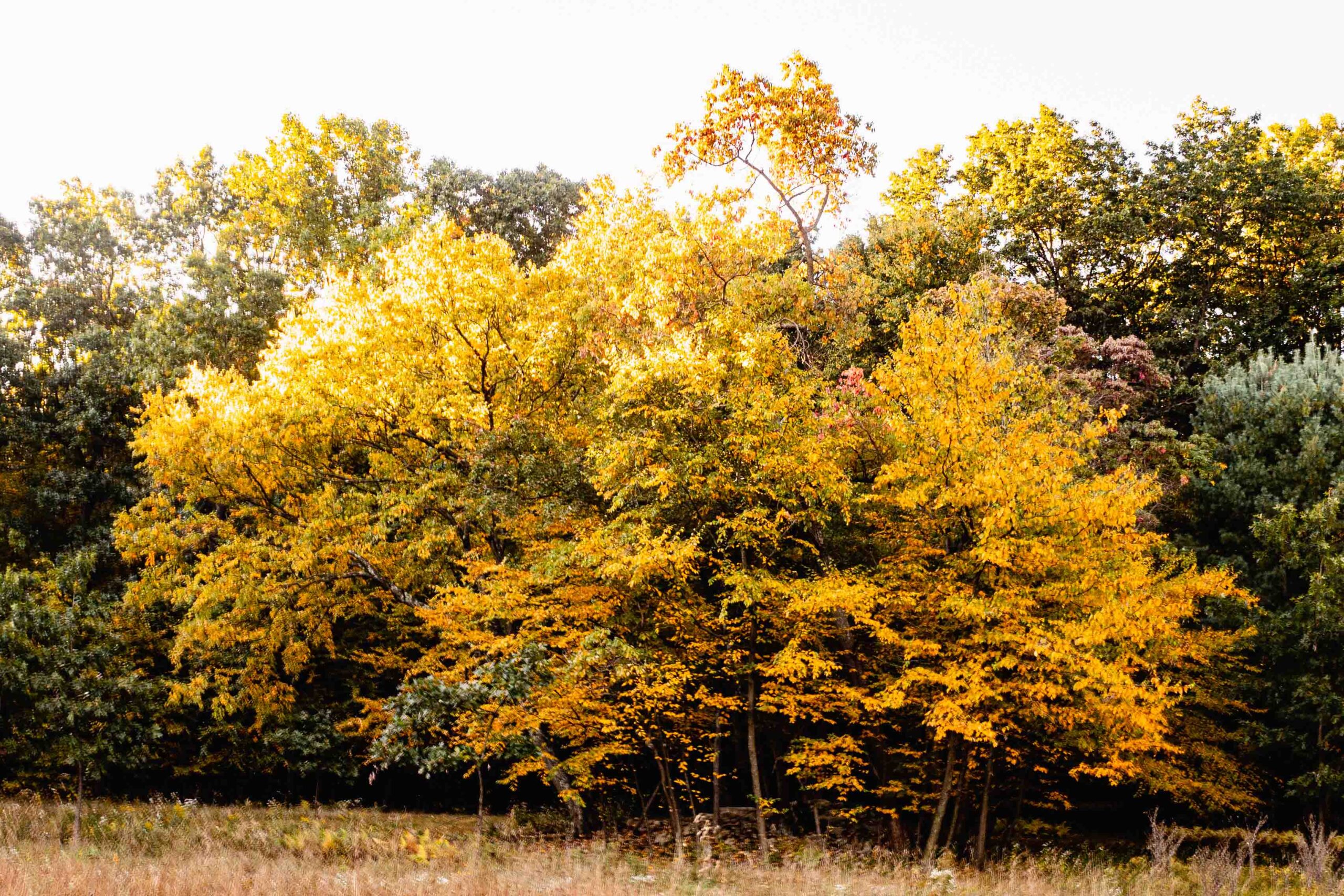Six groupings of diverse native trees have populated remnant stone piles over the past hundred years. Species including oak, cherry, dogwood, maple, aspen, sassafras, birch, poplar, pine, and viburnum create an array of color in the spring and fall and shade in the summer.
The original farmers cleared forest to create a hay field and had the formidable task of removing rocks in abundance from the cleared area. Stone can be seen tumbled along the edge of the meadow and gathered into significant piles throughout the meadow itself. Trees self-planted into these stone piles creating copses of trees dotting the meadow. Each has its own set of native trees within. We have altered two copses to enhance access. One has been covered with earth to create a plinth and seating area within this natural “bower”. The southernmost copse at the highest point in the clearing is accessible via a boulder “bridge” that provides an elevated view down and across meadow.
Dogwood (Cornus florida)
Sassafras (Sassafras albidum)
Black Cherry (Prunus serotina)
Christmas Fern (Polystichum acrostichoides)
Marginal Wood Fern (Dryopteris margenalis)
Quaking Aspen (Populus tremuloides)
Red Maple (Acer rubrum)
Red oak (Quercus rubra),
Spotted Dead Nettle (Lamium maculateum)
White oak (Quercus alba)
Sweet birch (Betula lenta.)
Spotted Beebalm (Mondarda punctata)
Beardtongue (Penstemon)
White Snakeroot (Ageratina altissima)

bower (noun) 1. a pleasant shady place; 2. a retreat or sanctuary